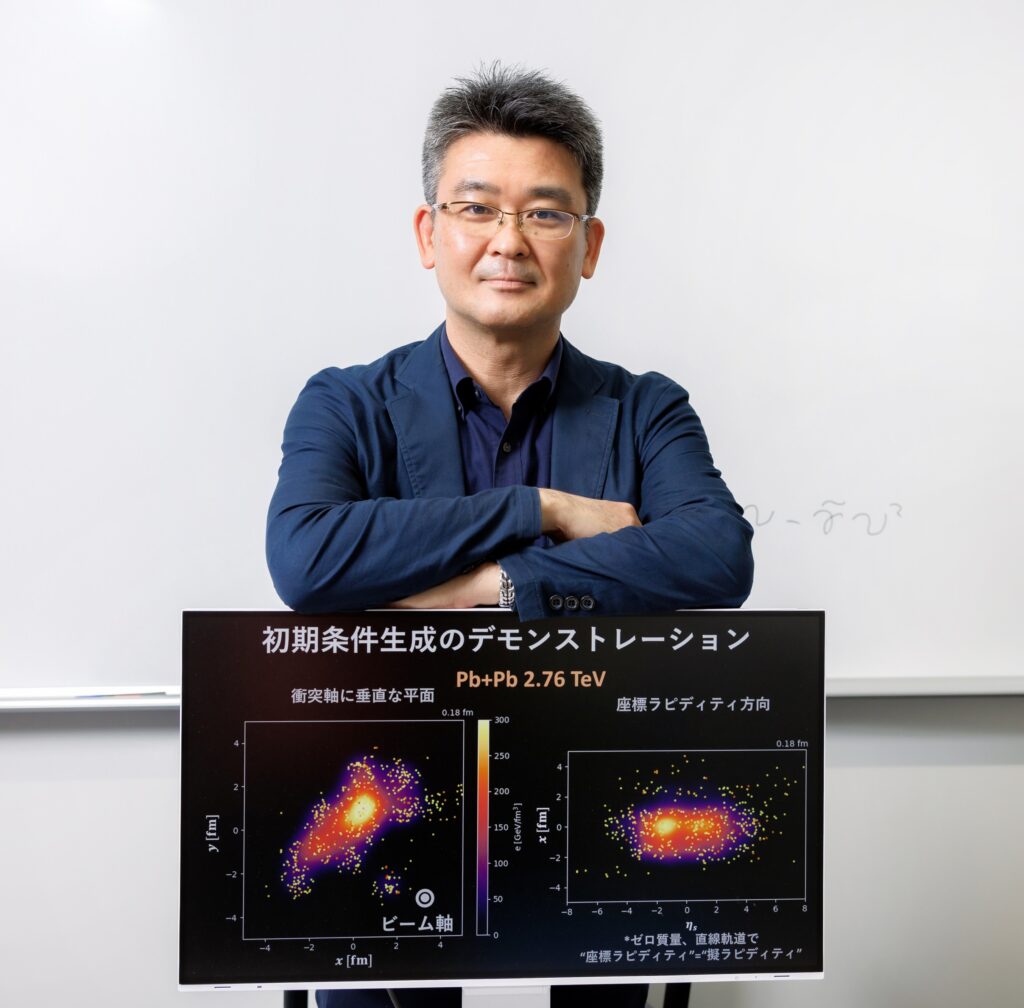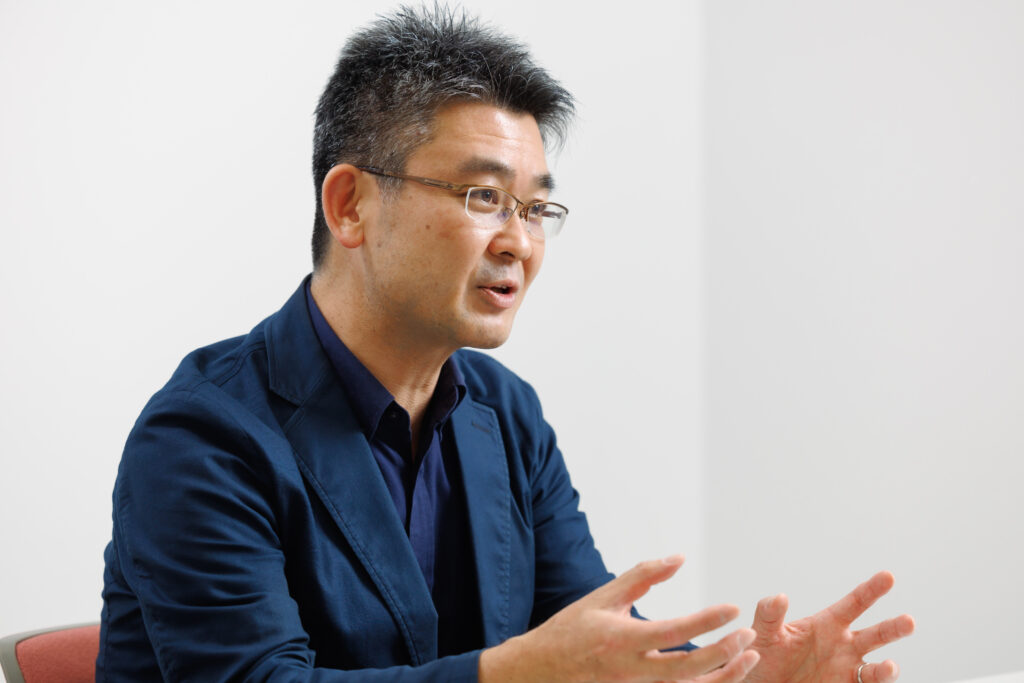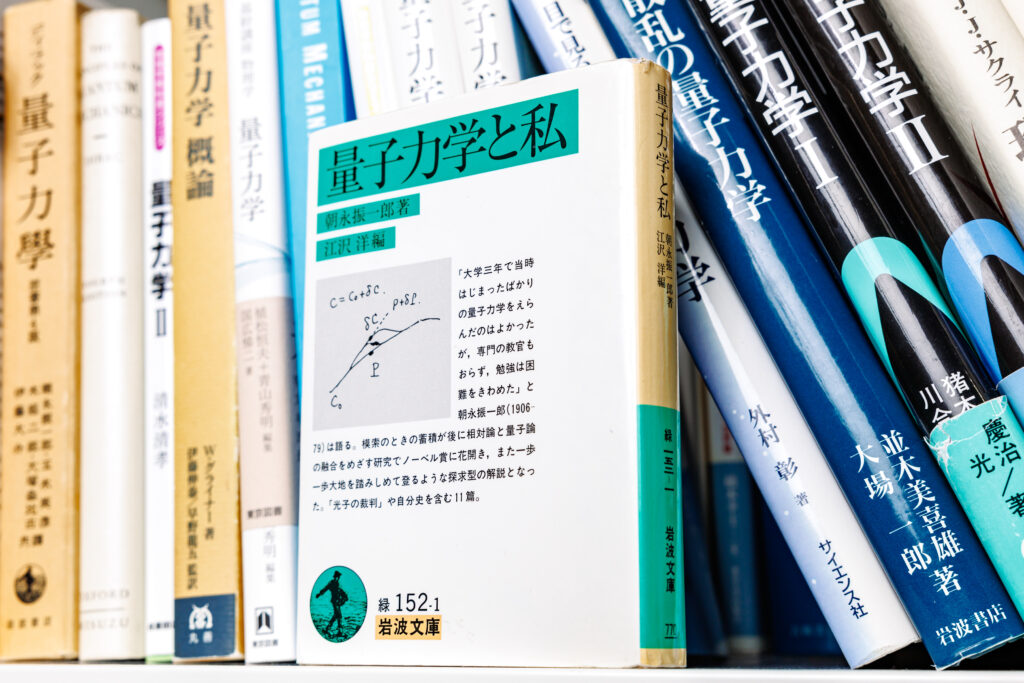
The Faculty of Science and Technology’s Professor Hirano, who specializes in high-energy nuclear physics, uses computer simulations to study quark–gluon plasma. He talks about the “perfect liquid” that is related to the early universe and the primordial matter.
The matter around you usually changes state as its temperature rises from a solid to a liquid, and then to a gas. Increasing the temperature further results in a state called plasma, where the nuclei and electrons that make up atoms begin to move freely. Even the protons and neutrons in the nuclei start to move freely when the temperature is taken even higher, resulting in ultimate elementary particles called quarks. Quarks are usually bound together by gluons, which are the force-carrying particle for strong interactions, to form protons and neutrons—at extreme temperatures, these quarks and gluons become free particles.
Yet single quarks cannot exist in isolation—when a quark tries to be free from the other quark they had been paired with, they form a new pair from the vacuum—in this way they are considered lonely. This process becomes a chain reaction at high temperatures, and although quarks and gluons move freely, they are in a state comprised of an infinite number of particles. This state is called the quark–gluon plasma (QGP) that is the core of my research.
Quark–gluon plasma is the perfect liquid

QGP begins to form at temperatures of two trillion degrees Kelvin. The temperature at the surface of the sun is around 6000 degrees Kelvin, and 15 million degrees Kelvin at its center, which is much lower this two trillion degrees Kelvin. Yet collision energy can be converted to thermal energy using a particle accelerator to collide heavy nuclei together at close to the speed of light, allowing us to exceed two trillion degrees Kelvin. At this temperature, QGP is formed instantly in around 10-23 seconds.
My research uses computer simulations to try and identify what is happening within this QGP. My most notable achievement is my theoretical research related to QGP experiments announced in 2005, held using the Relativistic Heavy Ion Collider (RHIC) at Brookhaven National Laboratory in the US. My simulations found that the viscosity of QGP is extremely low and that it behaves as a perfect liquid, almost like water— and the announcement was covered widely in newspapers. The reason why QGP behaves like a liquid is due to the actual strength of these strong interactions that are capable of withstanding sudden expansion.
See the forest and the trees
It is believed that QGP filled the entire universe around 10 microseconds after the Big Bang—in this sense, QGP was the source of all matter. Studying the properties of QGP is in essence an attempt to reveal the source of matter and the universe. It is not possible to observe it directly with experiments, but by using computer simulations, conditions inside QGP can be reproduced and studied further.
High-energy nuclear collision reactions can be separated into four distinct stages: pre-collision, thermal equilibrium, QGP liquid, and hadron gas. Many researchers in this field focus their attention on simulations of QGP liquid, but my research team aims to refine the model by applying effects called “thermal fluctuations” to the QGP liquid, as well as creating an overall framework that encompasses all processes. Instead of “not seeing the forest for the trees,” my motto is to “see the forest and the trees”.
The book I recommend
“Ryoshi Rikigaku to Watashi”(Quantum Mechanics and I)
by Shinichiro Tomonaga, Iwanami Shoten.

The “German Travel Diary” included in this book is highly recommend, and clearly outlines the author’s sense of isolation in an unknown country, frustration when research does not proceed smoothly, and his jealously toward his classmate Hideki Yukawa who achieves spectacular achievements. I think this could be a source of motivation for young people if they are able to understand the struggles of such an influential physicist, and second Japanese Nobel laureate after Yukawa.
-
Tetsufumi Hirano
- Professor
Department of Engineering and Applied Sciences
Faculty of Science and Technology
- Professor
-
Graduated from the Faculty of Science and Engineering at Waseda University, and received his Ph.D in Science at the university’s Graduate School of Science. Research fellow at RIKEN BNL Research Center, postdoctoral researcher at the Department of Physics at Columbia University, lecturer at the Graduate School of Science at The University of Tokyo, and his current position at Sophia University from 2011.
- Department of Engineering and Applied Sciences
Interviewed: May 2022